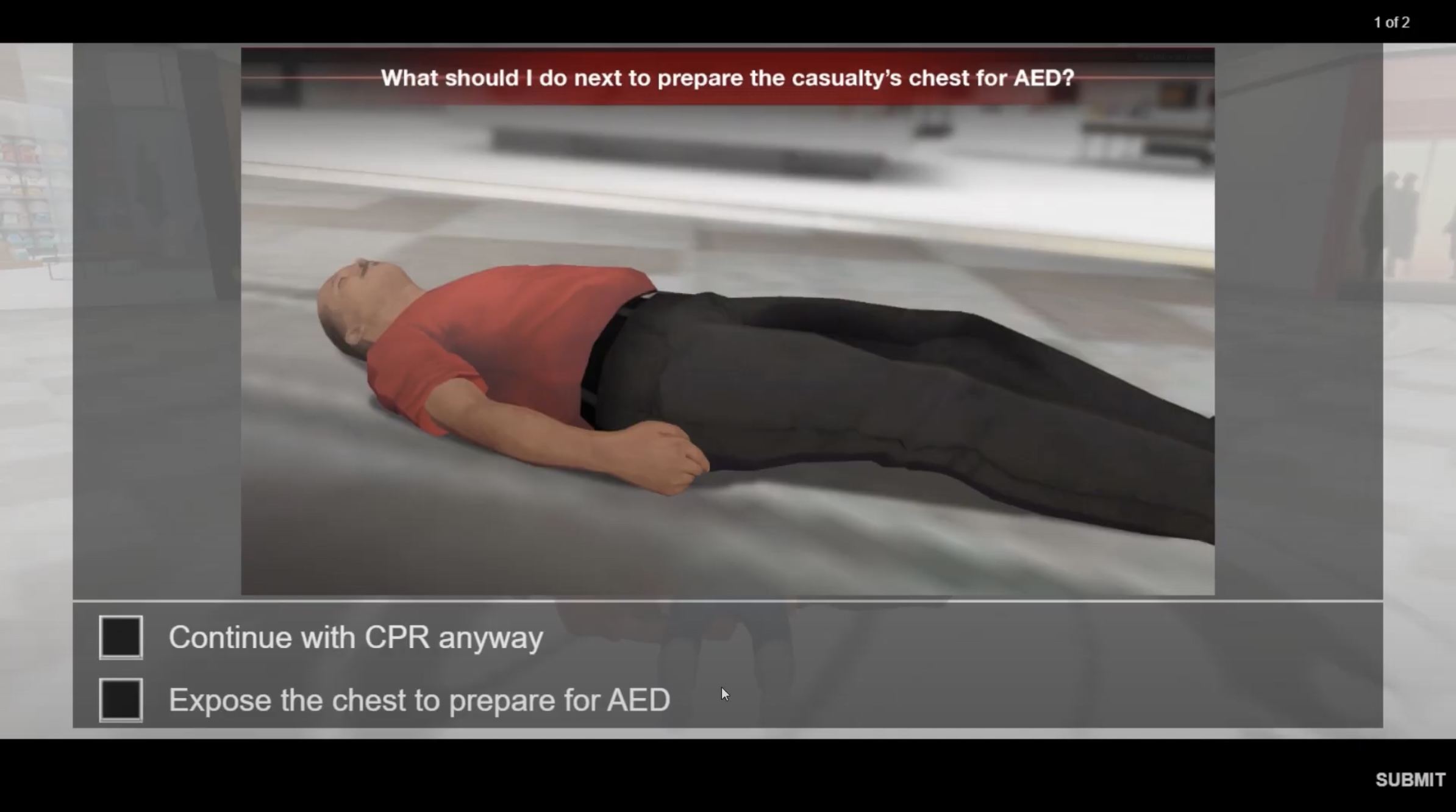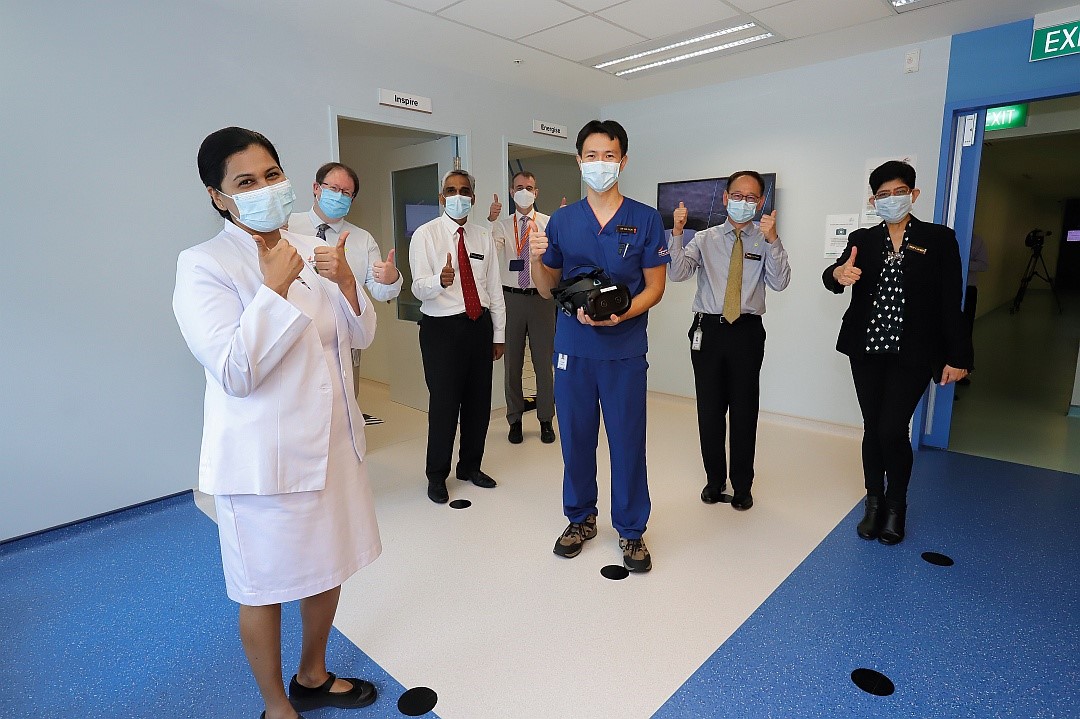In a hospital setting, one’s competency in healthcare skills could make the difference between life and death. Serious games are an attractive platform to supplement existing training programmes and augment the work of SingHealth’s educators.
Designing and playing games for work may sound like a dream job for many people. For SingHealth’s doctors and nurses who have developed serious games for healthcare education, it was certainly an unexpected calling, with a steep learning curve and plenty of research and hard work. Yet their involvement is crucial in ensuring that the games improve the training needs of our healthcare professionals.
With in-house SingHealth educators driving the development of serious games as the content experts, the game design will be aligned with the learning objectives and the SingHealth Duke-NUS Institute of Medical Simulation (SIMS) enables such training programmes to come to life in the digital space. Meet the designers behind two serious games made in SingHealth, and find out why they chose serious games as the platform to impart important skills.
Get updates on Tomorrow's Medicine in your mailbox!
Click here to subscribe
For healthcare professionals, by healthcare professionals
The Basic Cardiac Life Support (BCLS) game is a desktop first-player game for staff to learn or refresh their CPR skills. Even though the idea was sparked before COVID-19, the pandemic catalysed the need for the game so that healthcare professionals could renew their CPR certification every two years.

Screenshot from the BCLS game designed by nurses from the SingHealth Alice Lee Institute of Advanced Nursing.
“We are the subject matter experts, and we had to find ways to convey to our game designers the training scenarios as accurately and realistically as possible,” said
Senior Nurse Educator Lee Min from SingHealth Alice Lee Institute of Advanced Nursing (IAN).
Without any experience in game development, there was a lot to unravel and learn for the healthcare educators developing the games. They spent much time on research and in consultation with game developers to create a game that mimics typical healthcare scenarios, to help healthcare professionals learn and maintain their cardiopulmonary knowledge and skills.

A multiple choice question in the BCLS game.
“We had the idea to create this game since 2019, but we did not have the necessary experience to develop it until we were linked up with SIMS and given the Learning and Innovation Grant,” said Nurse Educator Cigy Manesh, who was part of the IAN team of nurses who developed the game. “Our game offers different quizzes and interactive puzzles to keep our learners engaged. We also designed a variety of scenarios for a more immersive feeling,” said Ms Manesh.

Playing the "Drug Dispensary at Pharmacy" Virtual Reality game, one of the serious games developed by SingHealth's pharmacists, with a VR headset.
The immersive feeling is one of the biggest benefits of using serious games, which relies on stories that draw on the learner’s emotional, cognitive and social motivations to mimic the stressors of an emergency situation, but in a controlled environment. In a similar vein, the Acute Care Virtual Reality (VR) Game developed by the Department of Internal Medicine at Singapore General Hospital (SGH) is another example of a game designed based on a common emergency situation – septic shock management, primarily for patients experiencing persistent hypotension.
One challenge doctors face in managing hypotension is that the symptoms are not as clear in the real world as they are in a textbook, explained Dr Yee Yucai, Consultant, SGH. "In real life, doctors can be overwhelmed by the information and distracted by red herrings, which might impede the diagnosis of hypotension."
Based on this observation, Dr Yee directed the Acute Care Game to guide learners towards deriving a diagnosis through realistic scenarios a doctor is likely to face on the job. In the game, players have the option to talk to nurses, examine the patient and review medical records to decipher the situation—which adds more dimension to the learning experience compared to textbook study. With the game, Dr Yee expressed his hopes that it will reduce stress for doctors and help them to concentrate on identifying the true markers of septic shock and manage their patients better.

Screenshot from the Acute Care Virtual Reality Game – Players use VR controllers to select options.
Augmenting healthcare education, and beyond
“Serious games have the ability to simulate challenging scenarios for learners to practise critical thinking, decision making and hone practical skills in a safe learning environment,” said Prof Chan Choong Meng, Group Chief Education Officer, SingHealth. “They also fuel high levels of engagement through immersive game play. This results in prolonged retention of knowledge.” And indeed, the learning benefits are worth the effort. As a nod to the value that serious games adds to competency trainings, more learners are enjoying such lesson mode, particularly for BCLS training.
The BCLS game allows learners to learn cardiopulmonary resuscitation using a computer game, with the potential to reduce the current training time of four hours by at least 25 per cent . Healthcare professionals could complete the training on their own time—a major benefit in a time of labour shortages like the pandemic. This can reduce the workload of instructors, who must conduct trainings for about 5,000 healthcare workers in a year.
Learning in a simulated environment have the additional benefit of allowing learners to practise under conditions that might otherwise be impossible in traditional training settings due to safety considerations. “Having this game embedded in virtual reality allows us to create a realistic training scenario with a controllable level of stress, for example, emulating the urgency of diagnosing a patient quickly and accurately in an emergency room,” said Dr Yee.
Diagnosing septic shock is one of the many training possibilities in acute care management that could be offered by the Acute Care Game. "With this foundation, it's definitely possible to create multiple scenarios of patients with undifferentiated hypotension and randomise them during gameplay in future," Dr Yee said.
Read more: Be game for change: How technology is raising the bar in healthcare education.
These games provide an opportunity to collect valuable data on individual learner performance. “Educators can analyse this data to gain useful insights into areas which are challenging our learners and educators today,” said Prof Fatimah Lateef, Co-Director, SIMS. “This will certainly help to nurture critical thinking, clinical reasoning and reflection.”
A hub to educate, inspire, innovate and incubate

Dr Yee Yucai (center, in blue), Ms Cigy Manesh (first from left) together with senior management from SingHealth and Duke-NUS Medical School in the SIMS i3 Hub.
The Acute Care Game and BCLS Game are two out of 18 serious games housed at the SIMS i3 Hub, many of them designed by SingHealth staff working in collaboration with game developer companies. “The IAN team is hopeful that the BCLS training game can be further developed into a portable kiosk with a “smart” manikin. This way, the lessons can be moved to easily accessible locations for healthcare staff to renew their BCLS license at their convenience,” said Assistant Director of Nursing, Ms Teh Nguan Kheng from IAN.
To facilitate a gamified way of learning, the i3 Hub is equipped with cutting-edge technology like Extended Reality (XR) headsets, gaming computers, tablets and even a haptic floor capable of vibrating—all of which contribute to a more realistic and immersive learning experience. It stands as a symbol of the AMC’s commitment to advance simulation and serious game development for healthcare education and training.
Read more: New SingHealth Duke-NUS simulation facility uses serious games to train healthcare workers
Get updates on Tomorrow's Medicine in your mailbox!
Click here to subscribe
